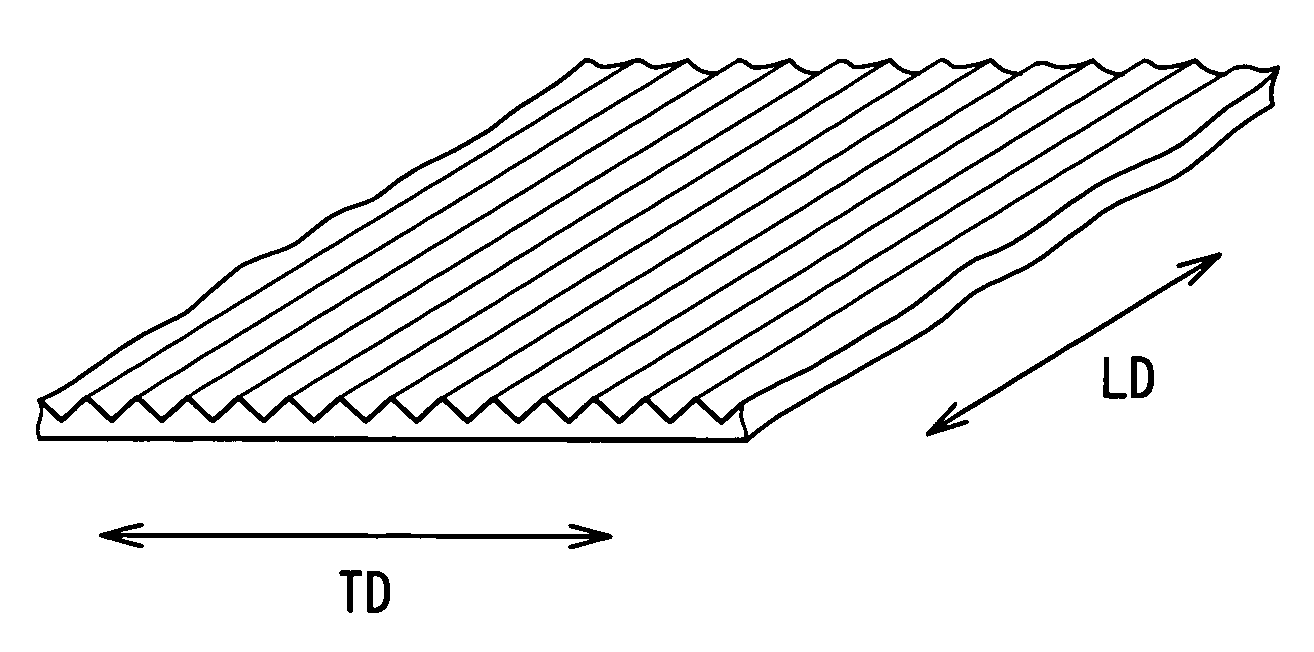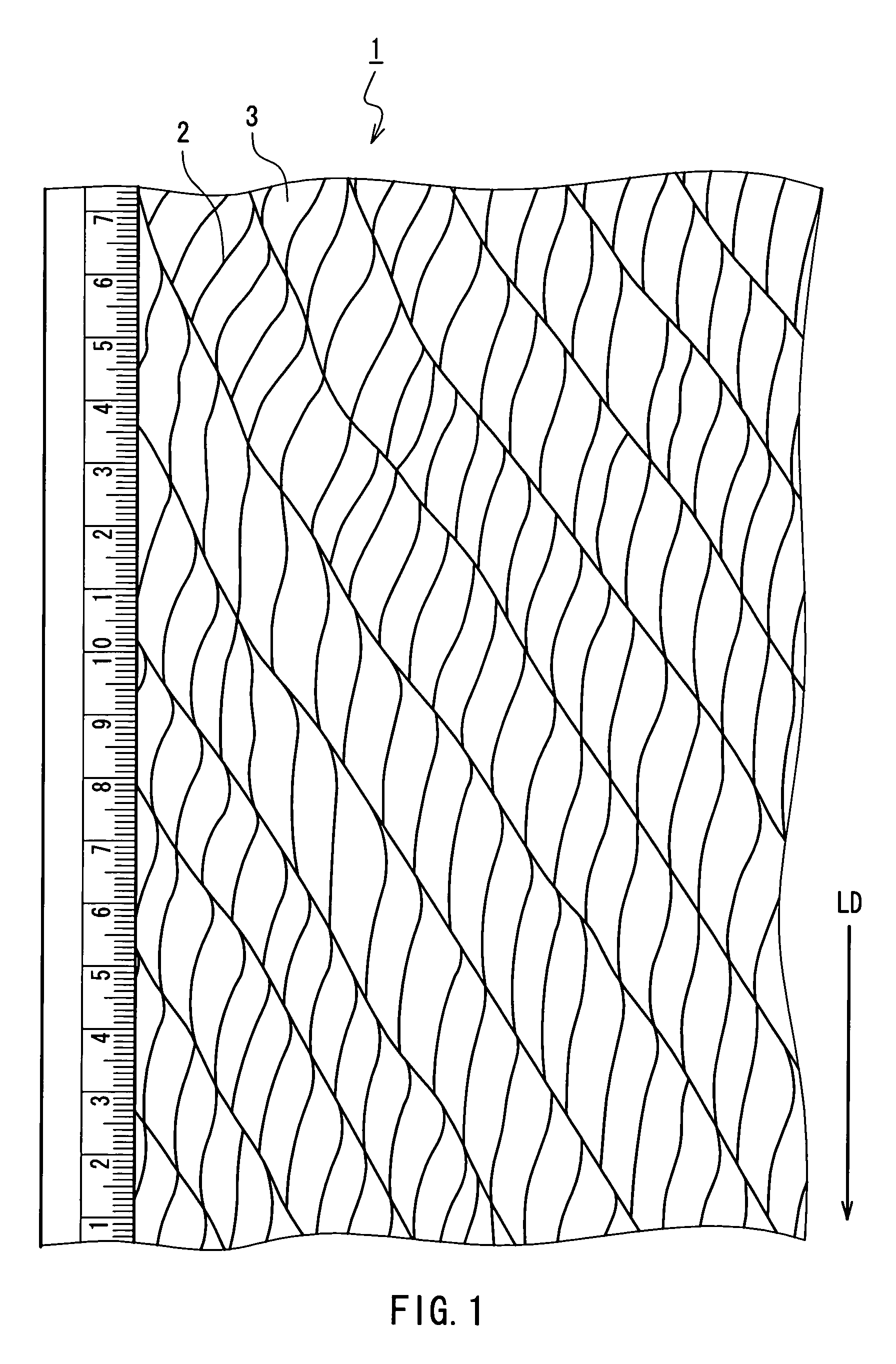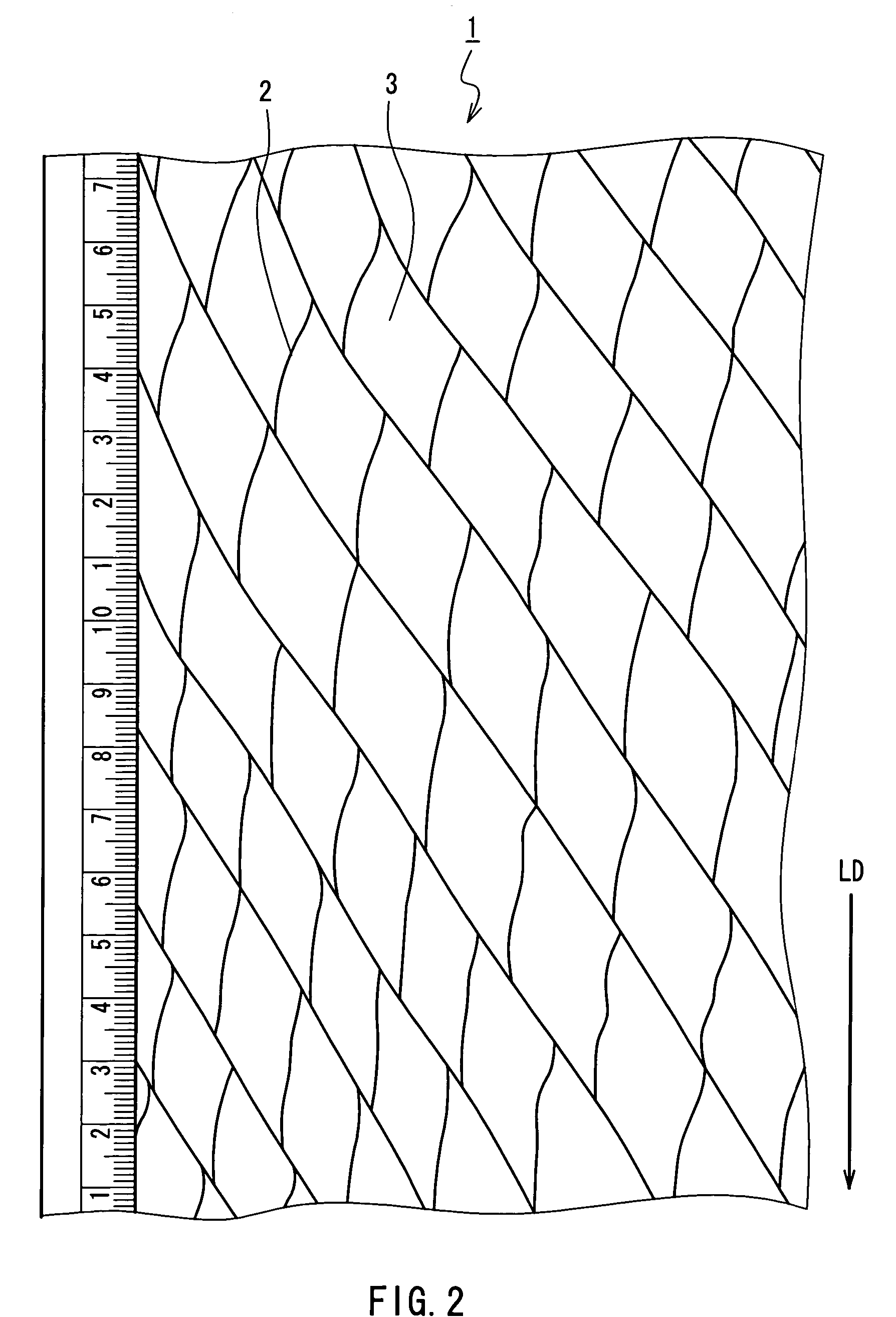Polytetrafluoroethylene fiber and method for manufacturing the same
a technology of polytetrafluoroethylene and fibers, which is applied in the direction of transportation and packaging, synthetic resin layered products, and other chemical processes, can solve the problems of high manufacturing cost of ptfe by this method, low strength of fibers obtained, and inability to produce fibers by a generally adopted method such as extrusion spinning of molten resins and resin solutions, etc., to achieve uniform fineness, high production yield, and small average fineness
- Summary
- Abstract
- Description
- Claims
- Application Information
AI Technical Summary
Benefits of technology
Problems solved by technology
Method used
Image
Examples
working examples
[0058]The following describes the present invention more specifically by way of working examples.
(Manufacturing of PTFE Original Film)
[0059]To 80 mass parts of PTFE fine powders obtained by an emulsion polymerization method, 20 mass parts of naphtha was mixed. This mixture was subjected to paste extrusion through a die with an angle of 60° under the condition of RR of 80:1 so as to obtain a circular bar with a diameter of 17 mm. This extruded article was rolled between a pair of rolls with a diameter of 500 mm, followed by the removal of the naphtha at a temperature of 260° C. The thus obtained PTFE film had a length of about 250 m, a film thickness of 0.2 mm and a width of about 260 mm.
working example 1
[0060]The PTFE original film obtained by the above-stated process was uniaxially stretched by 12 times in the lengthwise direction. Thereafter, this film was heat-treated at 380° C. for 3 seconds. Thereby, a baked film of 0.2 mm in film thickness and 260 mm in width was obtained. Then, by using the emboss roll having the emboss pattern shown in FIG. 3A and the apparatus of FIG. 4, a zigzag pattern was given to the PTFE film, the zigzag pattern having a pitch interval X between a crest and an adjacent crest of 0.5 mm, a vertical interval Y of 0.6 mm and a zigzag angle θ of 45°.
[0061]The linear pressure of the emboss roll during the emboss processing was 0.8 Kg / cm. The embossing was applied continuously in the lengthwise direction and in the width direction and all over the film.
[0062]Next, the PTFE film was fed to a revolving roll with needles so as to slit the film to be opened, whereby a PTFE filament having a network structure was obtained, the network structure being made up of r...
working example 2
[0067]An original film was uniaxially stretched by 9 times in its lengthwise direction, and other conditions were the same as those in Working Example 1 so as to conduct a heat treatment, embossing and opening of the film. Thereby, a PTFE filament having a regular network structure was obtained.
PUM
| Property | Measurement | Unit |
|---|---|---|
| thickness | aaaaa | aaaaa |
| thickness | aaaaa | aaaaa |
| density | aaaaa | aaaaa |
Abstract
Description
Claims
Application Information
 Login to View More
Login to View More - R&D
- Intellectual Property
- Life Sciences
- Materials
- Tech Scout
- Unparalleled Data Quality
- Higher Quality Content
- 60% Fewer Hallucinations
Browse by: Latest US Patents, China's latest patents, Technical Efficacy Thesaurus, Application Domain, Technology Topic, Popular Technical Reports.
© 2025 PatSnap. All rights reserved.Legal|Privacy policy|Modern Slavery Act Transparency Statement|Sitemap|About US| Contact US: help@patsnap.com



